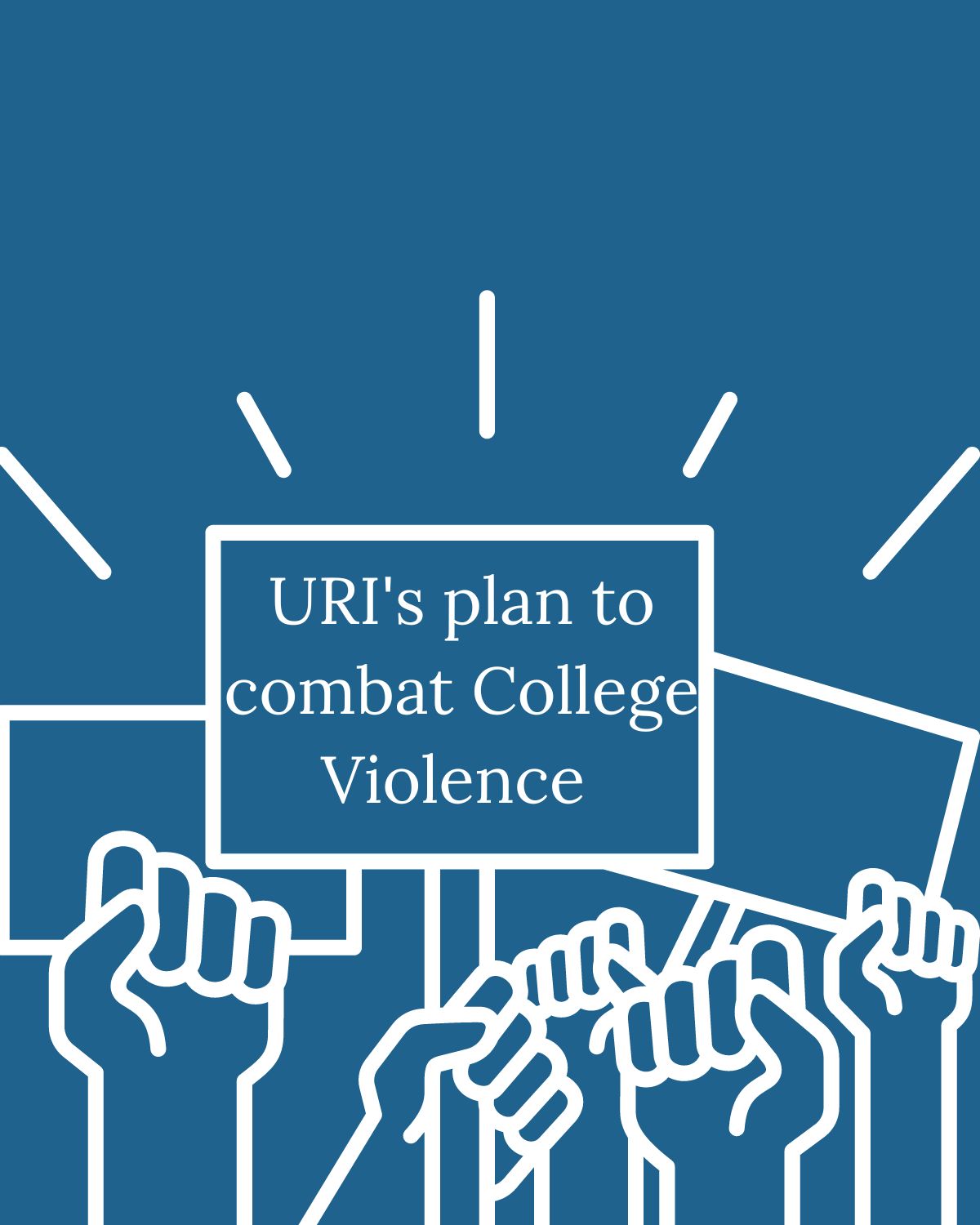With recent violence on college campuses, what can students do to ensure safety? Graphic by: Ronan Himelrick | Managing Editor
A shooting at the University of Virginia, a stabbing of four University of Idaho students, several murders near Temple University and, most recently, a shooting at Michigan State University, have increased national discussion of college campus-related violence.
In 2022, The National Council for Home Safety and Security ranked the University of Rhode Island fourth in their list of the Safest College Campuses in the United States, according to WPRI.com. Despite the reputation of being a safe and community-driven campus, the University continues to prepare for critical incidents, according to Michael Jagoda, director of public safety and chief of police at URI.
The public safety department’s Office of Emergency Management has the sole goal of risk mitigation, which involves developing the most effective and efficient means of preparation and response whenever the campus experiences an emergency, according to Jagoda.
While campus police take on the first responder component of critical incidents, emergency management involves coordinating information and creating situational awareness in order to make sure that all areas of the University are “rowing in the same direction,” according to Emergency Management Director and Assistant Director of Public Safety, Samuel Adams.
“You can’t prevent everything, whether it’s a hurricane or anything to an active shooter,” Adams said. “You can’t really predict beyond a certain point, so our focus is [the] response.”
Each incident has a specific response plan, ranging from responses to natural disasters, such as winter storms or hurricanes, to man-made incidents, like armed regressor or active shooter incidents, according to Jagoda. These plans are strengthened and improved through training and community response in order to ensure that URI is a safe place.
URI public safety staff train every year over the summer and over winter break through table top discussions and workshops, in addition to utilizing on-campus facilities.
“We kind of get everybody thinking about what their role would be in a critical incident,” Jagoda said. “How they would respond, how their role is vital in managing a critical incident here. They get thinking so they understand.”
Campus police work with the Division of Student Affairs, specifically the Dean of Students office, to improve all aspects of campus safety aftershock, according to Jagoda. This includes working with stakeholders to discuss crisis management, health management, mental health, family support and critical stress briefing.
Because the majority of their focus is this aftershock state of the University, emergency management works with all aspects of the University, from President Marc Parlange’s executive team to local fire and emergency medical services agencies, according to Adams.
A large part of the response to crisis events is to organize all the resources that are being poured onto the campus, according to Adams. The Office of Emergency Management is in the stages of finalizing a largely reworked Incident Management Plan, which outlines the roles and responsibilities of staff and faculty in the event of an emergency. Adams explained that there will be workshops for this plan in early May, and then an official tabletop exercise, or run-through of the plan, in June.
Despite having a reworked plan, URI’s public safety department is constantly changing, according to Adams. This change is what increases safety and communication on campus.
“There’s always something,” Adams said. “It’s like painting the Golden Gate Bridge. You’re done, and then you start over again.”
In response to the campus-related violence in Michigan and Idaho, Jagoda explained that campus safety is always looking at after-actions. The staff looks at reports by law enforcement agencies, incident command and the national incident management system in order to assess what actions URI needs to modify. Then, they work to improve policies and procedures through training.
URI has gotten “a lot more” requests for active shooter training since the MSU shooting, according to Jagoda.
Once a month, the campus police department offers Citizen’s Response to Active Shooter Events (CRASE) training to the URI community. These 90-minute training sessions provide practical skills and strategies on how to respond in the event of an active shooter using the avoid, deny and defend method.
Department training occurs on campus in areas including, but not limited to, the Robert L. Cathers Library and Learning Commons, Memorial Student Union and many resident and dining halls, according to Jagoda. These types of physical training help staff to get more familiar with floor plans, which contributes to efficient and proper incident responses.
URI police publish daily activity logs in order to demonstrate transparency within the department and community. Jagoda explained that, as URI is a safe campus, most crimes involve lost or stolen personal property. The most common activities in the log so far this year are building checks, lot checks, parking complaints and pulling over vehicles, as of Monday, Feb. 27.
Jagoda is a finalist for this year’s Campus Safety Director of the Year award by the Campus Safety magazine, according to URI’s Website. URI’s reputation as a safe school, as well as his award, was not the result of a single department or individual, but the community, according to Jagoda.
Feedback from community partners, citizens, students and staff allow the University to be safe and respectful, according to Jagoda. He stated his pride as an alumni in URI’s community and partnerships and believes that the University is in the process of making a positive difference.

